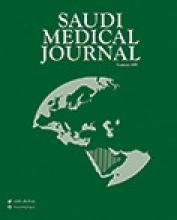Abstract
OBJECTIVE: To compare the accuracy and reproducibility of tooth measurements using newly developed software that gives 2-dimensional scanned images of dental setups with direct measurements using digital calipers.
METHODS: This experimental study was performed at the Dental Laboratories of the Faculty of Dentistry, University of Jordan, Amman, Jordan from September 2010 to December 2010. Ten sets of acrylic teeth (10 upper and 10 lower arches) were used. The mesiodistal width of each individual tooth was measured using a digital caliper (method I), which was considered the gold standard. The teeth were set to create 20 dental setups. The mesiodistal widths of teeth on the created setups were then measured by using a digital caliper (method II). The dental setups were then scanned using a flatbed computer scanner and tooth width measurements were performed using a special computer program (method III). Tooth measurements were divided into 6 groups, and the 3 methods were compared.
RESULTS: There was a statistical significant difference between the 3 measurement methods in most of the measured tooth groups. Methods I and II exhibited significant differences for most of tooth groups (ranged from 0.02 to 0.22 mm) while no significant difference was found between methods I and III (ranged from 0.03 to 0.11 mm).
CONCLUSION: Tooth width measurement with onscreen 2-dimensional scanned images of dental casts is comparable to measurements obtained using direct digital caliper.
- Copyright: © Saudi Medical Journal
This is an open-access article distributed under the terms of the Creative Commons Attribution-Noncommercial License (CC BY-NC), which permits unrestricted use, distribution, and reproduction in any medium, provided the original work is properly cited.






